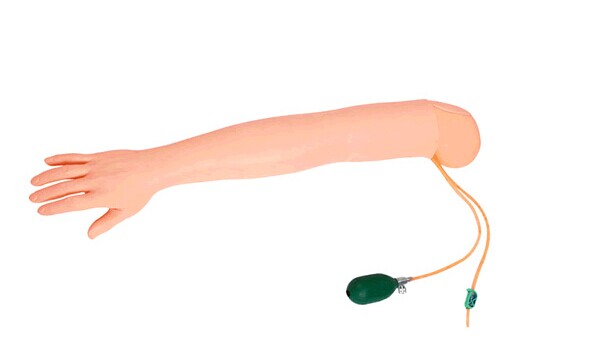Homepageпјҡ NEWS >> Can the pediatric arterial injection model effectively reduce risk in medical training?
The conclusion that the childhood arterial injection model can effectively reduce the risk in medical training is mainly based on the following aspects:
First, provide a safe and risk-free practice environment
In a practical medical setting, performing an arterial injection on a child carries a high risk because the child's vascular system is relatively fragile and sensitive, which can lead to serious complications if not performed properly. The pediatric arterial injection model provides a safe and risk-free practice environment for medical staff. In this environment, healthcare professionals can repeatedly practice the various skills of arterial injection, such as locating blood vessels, puncture techniques, and drug injection, without worrying about harm to real children. This safe and risk-free practice opportunity helps medical personnel gradually master and skillfully use the skills of arterial injection, thereby reducing the risk in actual operation.

Second, enhance practical skills and self-confidence
Through the training of children's arterial injection model, medical staff can be more familiar with children's vascular anatomy, puncture skills and ways to deal with various emergencies. This repeated practice and simulation can significantly improve the practical skills of medical staff, so that they are more comfortable in actual operation. At the same time, the successful completion of the simulation can also increase the confidence of the medical staff, so that they are more calm in the face of real patients, thereby reducing the risk of nervousness or inproficiency.
Third, reduce the occurrence of complications
Because the pediatric arterial injection model can highly simulate the real operation scenario, healthcare professionals can learn how to avoid complications in a simulated environment. For example, they can learn how to correctly select the injection site, how to control the injection speed and depth, and how to observe the patient's reaction. The study and application of these knowledge and skills can help to reduce the complications caused by improper operation in the actual operation, such as hematoma, infection, artery injury and so on.
Fourth, promote teaching innovation and quality improvement
The application of children's arterial injection model also promotes the innovation and quality improvement of medical teaching. By introducing this advanced teaching tool, teachers can use more intuitive and vivid teaching methods to impart knowledge and skills, and stimulate students' learning interest and enthusiasm. At the same time, the model can also be used as an important tool to assess and evaluate the skill level of medical staff, and help teachers understand the learning progress and existing problems of students, so as to carry out targeted guidance and improvement.
In summary, the pediatric arterial injection model can effectively reduce risks in medical training, provide a safe and risk-free practice environment for medical staff, enhance their practical skills and self-confidence, reduce the occurrence of complications, and promote teaching innovation and quality improvement.